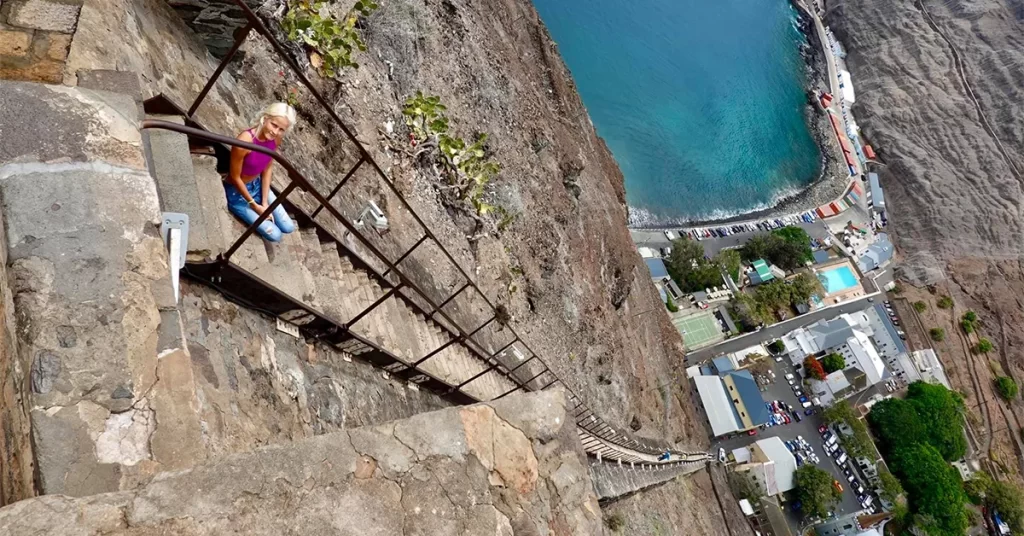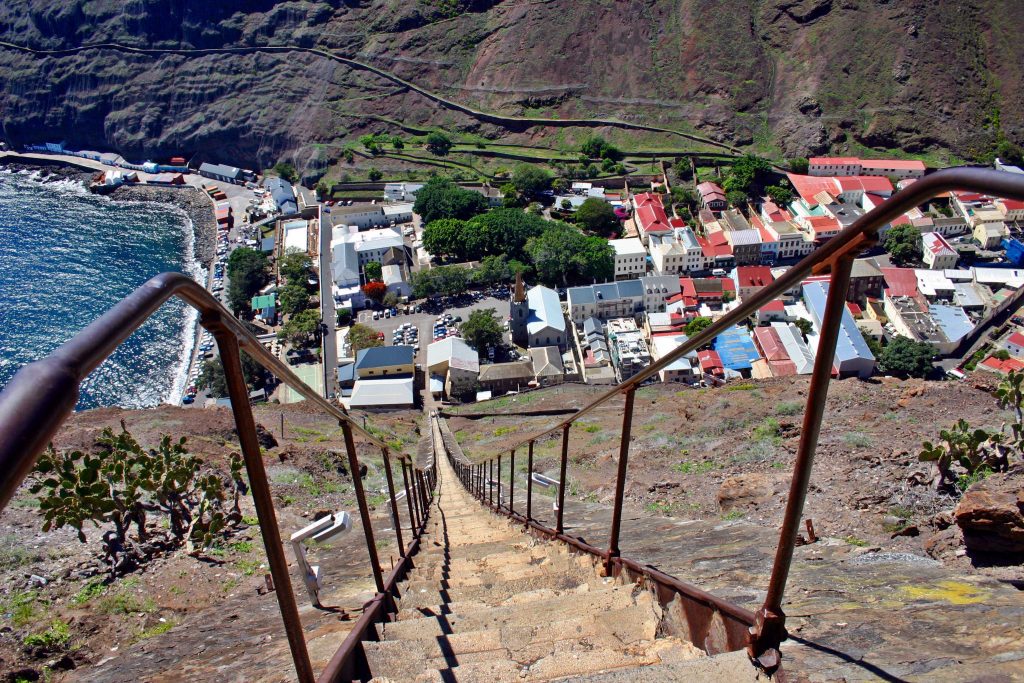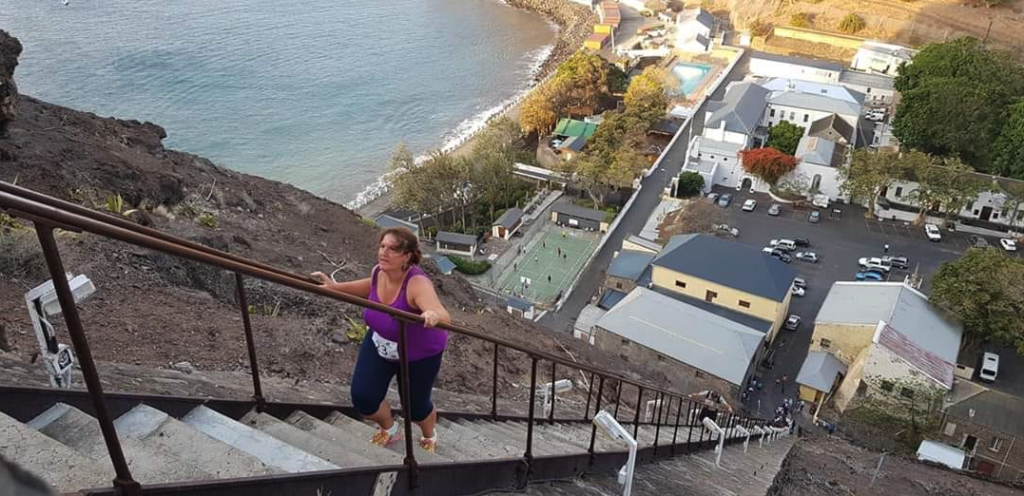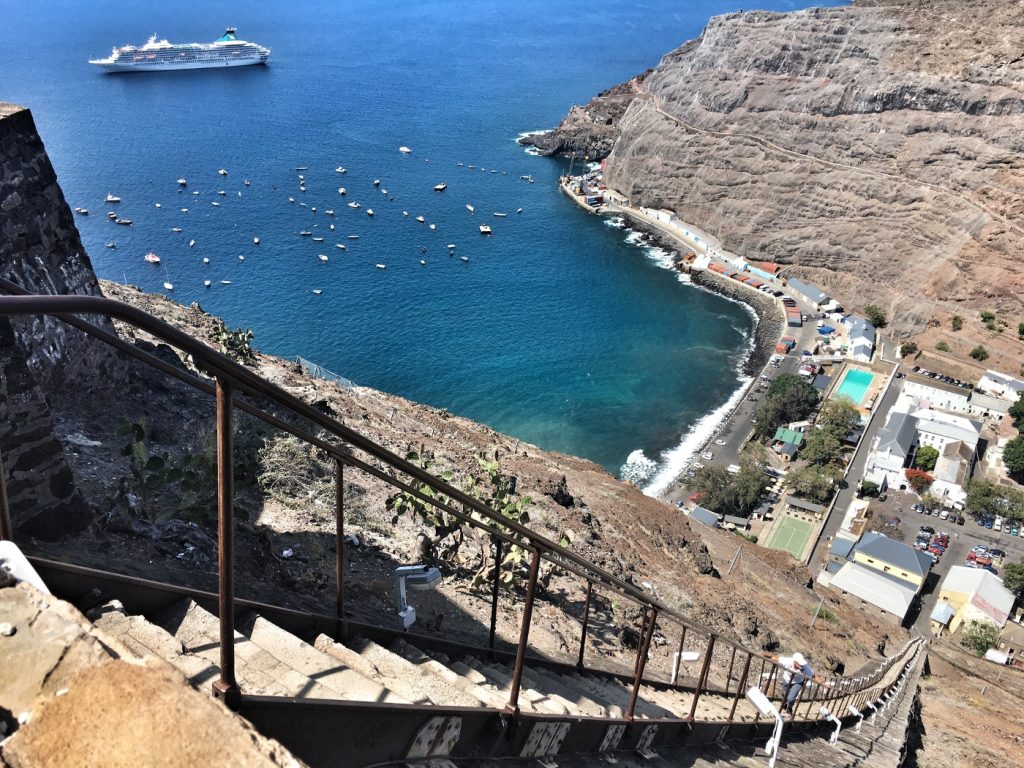
Welcome to Jacob’s Ladder, the World’s Steepest Stairway! In your history lessons, you might have come across the remote island of St. Helena, renowned for being the site of Napoleon Bonaparte’s second exile and eventual death in 1821. But beyond its historical significance, St. Helena holds another famous attraction known as Jacob’s Ladder.
As you approach this beautiful island by sea, you’ll immediately notice a striking feature – a continuous and incredibly steep stairway, perhaps the steepest you’ve ever encountered in your life. This impressive structure is none other than Jacob’s Ladder, twice recognized as one of the seven wonders of St. Helena. However, be warned, ascending it is not for the faint of heart.
What is the history behind Jacob’s Ladder?

The origin of Jacob’s Ladder dates back to a time when a zigzag path and a rope ladder led from the valley floor to the Ladder Hill Fort atop the hill. Soldiers primarily used this route to access the barracks. The hill earned its name “Ladder Hill” due to the presence of this rope ladder.
In 1820, the rope ladder was replaced with a steep, two-car inclined plane. Wagons were hauled up this inclined plane on rails using pulleys, facilitating the transportation of goods and supplies for the Ladder Hill Fort and the farmland above. A steep staircase was also incorporated for pedestrians. This system, called the “Ladder Hill Railway,” was operational from 1829 to 1871, supporting the transport of manure from Jamestown to the hill as fertilizer. However, it encountered several malfunctions, including broken haulage chains and damage caused by overweight manure-laden trucks. Ultimately, due to white ants damaging the wooden sleepers, the railway fell into disuse and was dismantled in 1871, leaving behind the staircase, Jacob’s Ladder, which is still in use today.
A View From The Top

Jacob’s Ladder consists of 699 steep steps, stretching 924 feet from the valley floor to the Ladder Hill Fort at the top of the slope. With an average rise of 11 inches per step, the cliff face towers 602 feet above sea level. Once you reach the top, you are presented with this incredible view which is utterly picturesque.
Climbing the ladder

According to those who have hiked it, the ascent of Jacob’s Ladder proves to be far more exhausting than it appears at first glance. Climbing the nearly vertical stairs gives a sense of accomplishment, but the toll it takes on the body becomes evident the following day, leaving hikers struggling to move their limbs. Yet, for those who conquer the challenge, the rewarding view from the top makes the arduous climb all the more worthwhile.
Why are the stairs named Jacob’s Ladder?

The name “Jacob’s Ladder” finds its roots in the Bible, specifically in the Book of Genesis, Chapter 28, where Jacob dreams of a ladder on Earth that reaches heaven, with angels ascending and descending upon it. Thus, the steep stairway is aptly likened to “Jacob’s Ladder,” and similar references to challenging climbs can be found worldwide.
While stairways are meant to ease our lives, some, like Jacob’s Ladder, provide thrills and adventures leading to breathtaking views, making the difficult climb all the more rewarding. Would you climb this if you were presented with the opportunity? Let us know in the comments section.
Getting to the top it just the beginning, sliding down is where it gets really interesting

Hikers who brave the arduous climb have devised a risky but exciting descent technique, sliding down with their upper back on one handrail and their feet on the other, reminiscent of an amusement park ride, albeit without a brake button. Completing the challenging ascent grants hikers a certificate from the Museum of St. Helena, signifying their achievement.






